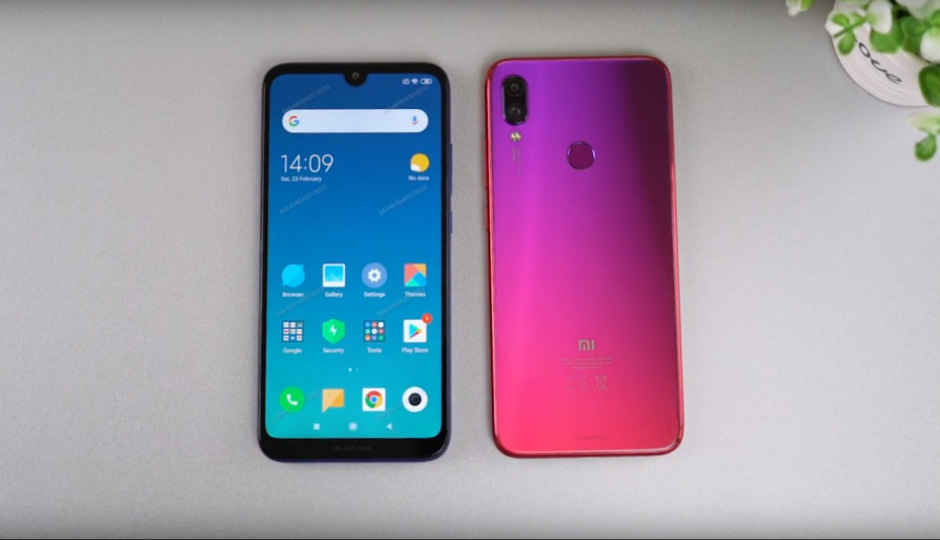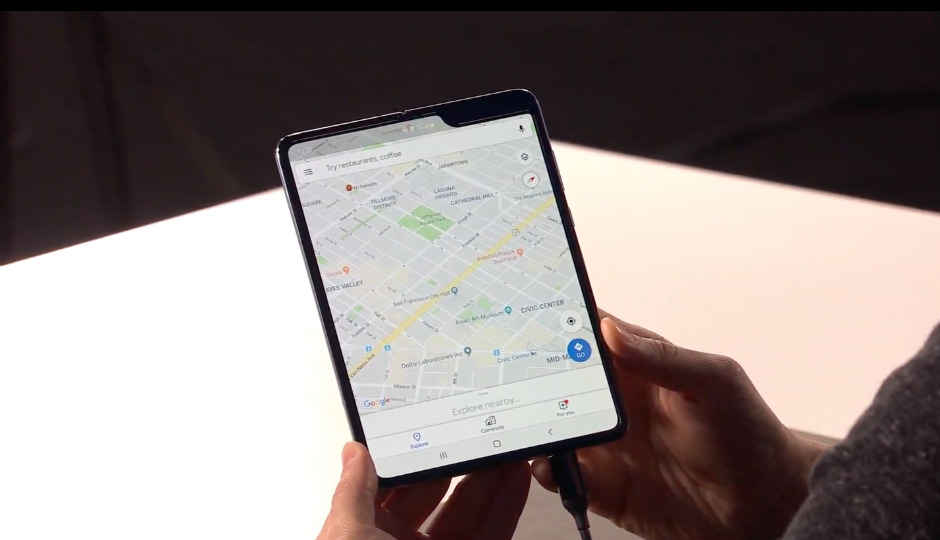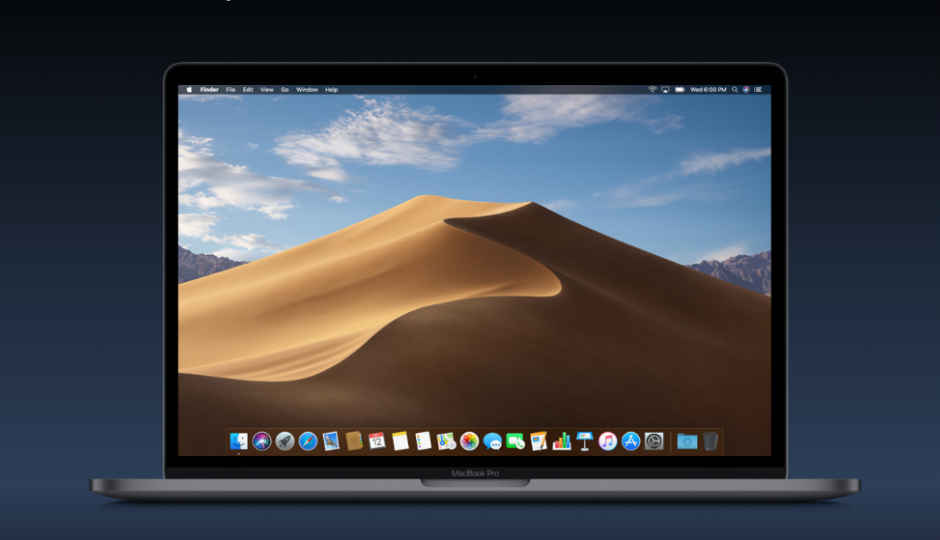 Highlights: Global smartphone market continues to decline in 2019 for third consecutive year: IDC. The smartphone volumes are forecast to fall by 0.8% this year with units dipping to 1.39 billion. However, smartphone market is expected to see growth on year-over-year basis The global smartphone market is expected to face its third consecutive year of declining shipments in 2019, with the volumes expected to fall by 0.8 percent this year, International Data Corporation (IDC) has said. The market research firm says that with the fall in shipments, smartphone shipments will dip to 1.39 billion units. However, the market will begin to pick up momentum this year with year-over-year growth of 2.3 percent in the second half. According to the IDC Worldwide Quarterly Mobile Phone Tracker, over the long term, smartphone shipments are forecasted to reach 1.54 billion units in 2023. Ryan Reith, Program Vice President with IDC's Worldwide Mobile Device Trackers, says that currently, the biggest question that remains unanswered is what will bring the smartphone industry back to growth. “There is no question industry growth has been down for reasons that have already been identified – longer replacement cycles, a challenged China market, and geopolitical headwinds – but it is shortsighted to overlook the possibilities of some important technology advancements that are within reach with 5G probably being the most significant,” Reith noted. Foldable phones and 5G are the buzzword for the year 2019, and IDC says that the current year is expected to witness a new high for technological innovation with the introduction of the new tech. “Marketing buzz around 5G is in its early stages but expected to ramp up quickly. And while use cases for upgrading to a 5G device/service remain unclear, it is evident that after 2019 the adoption will begin to attain significant numbers,” the firm says. IDC expects that 5G smartphone shipments will account for roughly 1 out of every 4 smartphones shipped globally in 2023. “Though the 5G developments and foldable screen buzz is yet to have a reality check from users, 2019 will be surely marked as a year of modernization in the smartphone market,” said Sangeetika Srivastava, Senior Research Analyst with IDC's Worldwide Mobile Device Trackers. In its latest Worldwide Quarterly Mobile Phone Tracker, IDC claimed that 2018 was the worst year ever for smartphone shipments globally as smartphone vendors shipped a total of 1.4 billion units in the full year, which is down 4.9 percent year-over-year (YoY). The market research firm said that in the fourth quarter of 2018, 375.4 million units were shipped, which was also down 4.9 percent YoY. At that time, Reith said that the holiday quarter of 2018 (the fourth quarter of the year) closed out the worst year ever for smartphone shipments. He predicted that the challenging market conditions would into the first quarter of 2019. It is already March and with a negative forecast of the smartphone shipments in the year, the likelihood of a declining market this year seems to be becoming more of a reality. Related Read: Xiaomi gets largest market share in India, exits 2018 with highest ever shipments: IDC
Highlights: Global smartphone market continues to decline in 2019 for third consecutive year: IDC. The smartphone volumes are forecast to fall by 0.8% this year with units dipping to 1.39 billion. However, smartphone market is expected to see growth on year-over-year basis The global smartphone market is expected to face its third consecutive year of declining shipments in 2019, with the volumes expected to fall by 0.8 percent this year, International Data Corporation (IDC) has said. The market research firm says that with the fall in shipments, smartphone shipments will dip to 1.39 billion units. However, the market will begin to pick up momentum this year with year-over-year growth of 2.3 percent in the second half. According to the IDC Worldwide Quarterly Mobile Phone Tracker, over the long term, smartphone shipments are forecasted to reach 1.54 billion units in 2023. Ryan Reith, Program Vice President with IDC's Worldwide Mobile Device Trackers, says that currently, the biggest question that remains unanswered is what will bring the smartphone industry back to growth. “There is no question industry growth has been down for reasons that have already been identified – longer replacement cycles, a challenged China market, and geopolitical headwinds – but it is shortsighted to overlook the possibilities of some important technology advancements that are within reach with 5G probably being the most significant,” Reith noted. Foldable phones and 5G are the buzzword for the year 2019, and IDC says that the current year is expected to witness a new high for technological innovation with the introduction of the new tech. “Marketing buzz around 5G is in its early stages but expected to ramp up quickly. And while use cases for upgrading to a 5G device/service remain unclear, it is evident that after 2019 the adoption will begin to attain significant numbers,” the firm says. IDC expects that 5G smartphone shipments will account for roughly 1 out of every 4 smartphones shipped globally in 2023. “Though the 5G developments and foldable screen buzz is yet to have a reality check from users, 2019 will be surely marked as a year of modernization in the smartphone market,” said Sangeetika Srivastava, Senior Research Analyst with IDC's Worldwide Mobile Device Trackers. In its latest Worldwide Quarterly Mobile Phone Tracker, IDC claimed that 2018 was the worst year ever for smartphone shipments globally as smartphone vendors shipped a total of 1.4 billion units in the full year, which is down 4.9 percent year-over-year (YoY). The market research firm said that in the fourth quarter of 2018, 375.4 million units were shipped, which was also down 4.9 percent YoY. At that time, Reith said that the holiday quarter of 2018 (the fourth quarter of the year) closed out the worst year ever for smartphone shipments. He predicted that the challenging market conditions would into the first quarter of 2019. It is already March and with a negative forecast of the smartphone shipments in the year, the likelihood of a declining market this year seems to be becoming more of a reality. Related Read: Xiaomi gets largest market share in India, exits 2018 with highest ever shipments: IDCfrom Latest Technology News https://ift.tt/2ETIdq6
 Highlights: US President Donald Trump addressed the Apple CEO as “Tim Apple” His name is Tim Cook and he was sitting right next to Trump. It isn’t the first time Trump has made such a mistake. Did you know that the CEO of Apple is named Tim Cook? You did?! Well congratulations as you may know more that the current President of the United States, Donald Trump. When addressing the American Workforce Policy Advisory Board, the US President called Tim Cook, “Tim Apple.” “We appreciate it very much, Tim Apple,” Trump said while sitting right next to the Apple CEO. Cook made no comment, but only nodded his head politely. Although, everyone (including us) would love to know what was going on inside his head at that time. Of course, it could very well be a mistake or a slip of tongue. After all, we all make mistakes. However, this isn’t the first time this has happened. Almost exactly a year ago, Trump called Lockheed Martin’s CEO Marillyn Hewson, “Marillyn Lockheed”. On top of this, the US President has a tendency to flub words. A few weeks ago, it was reported that he mispronounced Nepal and Bhutan as “Nipple” and “Button”. Then of course, was the infamous “Covfefe” tweet from a couple of years ago. Most recently, Trump called the Californian town of Paradise - Pleasure. This, while he was standing in the very town of Paradise, next to the Governor of California. Of course, there are a lot of questions that arise here? Does Donald Trump really think that company names are always derived from the last names of their CEOs? After all, Trump himself is a businessman and tends to use his own name when it comes to naming his businesses like Trump Tower, Trump Plaza, Trump University and so forth. Regardless, it’s not yet known if Russia had anything to do with this. Trump just called Apple CEO Tim Cook “Tim Apple” pic.twitter.com/gTHHtjWvc9 — Sean O'Kane (@sokane1) March 6, 2019 "Marillyn Lockheed" pic.twitter.com/9hUbrTeXlq — Dave Brown (@dave_brown24) March 22, 2018
Highlights: US President Donald Trump addressed the Apple CEO as “Tim Apple” His name is Tim Cook and he was sitting right next to Trump. It isn’t the first time Trump has made such a mistake. Did you know that the CEO of Apple is named Tim Cook? You did?! Well congratulations as you may know more that the current President of the United States, Donald Trump. When addressing the American Workforce Policy Advisory Board, the US President called Tim Cook, “Tim Apple.” “We appreciate it very much, Tim Apple,” Trump said while sitting right next to the Apple CEO. Cook made no comment, but only nodded his head politely. Although, everyone (including us) would love to know what was going on inside his head at that time. Of course, it could very well be a mistake or a slip of tongue. After all, we all make mistakes. However, this isn’t the first time this has happened. Almost exactly a year ago, Trump called Lockheed Martin’s CEO Marillyn Hewson, “Marillyn Lockheed”. On top of this, the US President has a tendency to flub words. A few weeks ago, it was reported that he mispronounced Nepal and Bhutan as “Nipple” and “Button”. Then of course, was the infamous “Covfefe” tweet from a couple of years ago. Most recently, Trump called the Californian town of Paradise - Pleasure. This, while he was standing in the very town of Paradise, next to the Governor of California. Of course, there are a lot of questions that arise here? Does Donald Trump really think that company names are always derived from the last names of their CEOs? After all, Trump himself is a businessman and tends to use his own name when it comes to naming his businesses like Trump Tower, Trump Plaza, Trump University and so forth. Regardless, it’s not yet known if Russia had anything to do with this. Trump just called Apple CEO Tim Cook “Tim Apple” pic.twitter.com/gTHHtjWvc9 — Sean O'Kane (@sokane1) March 6, 2019 "Marillyn Lockheed" pic.twitter.com/9hUbrTeXlq — Dave Brown (@dave_brown24) March 22, 2018  Highlights: Israel's first lunar spacecraft Beresheet is on its way to the Moon Beresheet shares a selfie with us It will touch down on lunar surface only by April 11 A collaborated mission executed by the state-owned Israel Aerospace Industries and Israeli NGO SpaceIL saw Israel's first lunar spacecraft Beresheet take off from Cape Canaveral, Florida on February 22. Nearly two weeks and 37,600 kilometres later, the spacecraft has sent back an image of its feet and lunar plaque along with the Earth in the background. Beresheet is currently on its way to the Moon. When the lander touches down on lunar surface, it will perform a number of experiments including measuring the local magnetic field. SpaceIL posted the selfie sent back by Beresheet on its Twitter account. The plaque seen in the image reads, "Am Yisrael Chai", which is Hebrew for "The nation of Israel lives", and "Small Country, Big Dreams." Beresheet, whose name translates to Genesis, took off on a SpaceX Falcon 9 rocket and will make Israel the fourth nation (and the first non-superpower nation) to land on the Moon after the US, Russia, and China. With the lunar landing, SpaceIL is hoping to create an Israeli "Apollo Effect" in an effort to inspire future generations of scientists in the nation to study science, technology, engineering and mathematics. Along with the measuring equipment, the Beresheet lander carries memories from Israel, says an earlier Space.com report. It carries a digital "time capsule", which contains over thirty million pages of data about the Earth, including a full copy of Wikipedia in English, the Bible, drawings by children, memories of a Holocaust survivor, Israel's national anthem, songs in Hebrew, the Wayfarer's Prayer (a Jewish prayer for a safe journey), the Israeli flag, and a copy of the Israeli Declaration of Independence. Israel's 585-kilogramme Beresheet lander is expected to touch down autonomously on lunar surface only by April 11. The spacecraft is currently orbitting the Earth in elliptical orbits and will travel 6.5 million kilometres in total, which is the longest distance travelled before to get to the Moon. Being the smallest spacecraft ever made for its weight, Beresheet will touch a maximum speed of 10 kilometres per second (36,000 kilometres per hour). Beresheet was developed and constructed at a relatively low cost of $100. Cover image courtesy: SpaceIL Related Read: NASA recreates ingredients for life on ocean floor
Highlights: Israel's first lunar spacecraft Beresheet is on its way to the Moon Beresheet shares a selfie with us It will touch down on lunar surface only by April 11 A collaborated mission executed by the state-owned Israel Aerospace Industries and Israeli NGO SpaceIL saw Israel's first lunar spacecraft Beresheet take off from Cape Canaveral, Florida on February 22. Nearly two weeks and 37,600 kilometres later, the spacecraft has sent back an image of its feet and lunar plaque along with the Earth in the background. Beresheet is currently on its way to the Moon. When the lander touches down on lunar surface, it will perform a number of experiments including measuring the local magnetic field. SpaceIL posted the selfie sent back by Beresheet on its Twitter account. The plaque seen in the image reads, "Am Yisrael Chai", which is Hebrew for "The nation of Israel lives", and "Small Country, Big Dreams." Beresheet, whose name translates to Genesis, took off on a SpaceX Falcon 9 rocket and will make Israel the fourth nation (and the first non-superpower nation) to land on the Moon after the US, Russia, and China. With the lunar landing, SpaceIL is hoping to create an Israeli "Apollo Effect" in an effort to inspire future generations of scientists in the nation to study science, technology, engineering and mathematics. Along with the measuring equipment, the Beresheet lander carries memories from Israel, says an earlier Space.com report. It carries a digital "time capsule", which contains over thirty million pages of data about the Earth, including a full copy of Wikipedia in English, the Bible, drawings by children, memories of a Holocaust survivor, Israel's national anthem, songs in Hebrew, the Wayfarer's Prayer (a Jewish prayer for a safe journey), the Israeli flag, and a copy of the Israeli Declaration of Independence. Israel's 585-kilogramme Beresheet lander is expected to touch down autonomously on lunar surface only by April 11. The spacecraft is currently orbitting the Earth in elliptical orbits and will travel 6.5 million kilometres in total, which is the longest distance travelled before to get to the Moon. Being the smallest spacecraft ever made for its weight, Beresheet will touch a maximum speed of 10 kilometres per second (36,000 kilometres per hour). Beresheet was developed and constructed at a relatively low cost of $100. Cover image courtesy: SpaceIL Related Read: NASA recreates ingredients for life on ocean floor Highlights: MediaTek is working on a 5G chip made on a 7nm process, due to release in 2019. The chipset will be more powerful than the Helio P90 and will be targeted towards the higher end of the market. MediaTek is expected to integrate its M70 5G modem in the chip. MediaTek’s approach to chipsets may not be the same as Qualcomm, but the Taiwanese company has been doing quite well in designing budget chipsets that offer higher value for the buck. The company has now confirmed that it is working on a 5G-enabled chip which will be manufactured on a 7nm process. The chip is slated to be unveiled this year. While the company’s present flagship, the Helio P90 SoC is made on a 12nm process, Finbarr Moynihan, MediaTek’s Vice President of corporate sales and business development in America and Europe told Android Authority that the 5G chip will be made on a 7nm process. To recall, the 7nm process is the most advanced manufacturing process available right now, and the Snapdragon 855, Kirin 980 and the Apple A12 Bionic are all manufactured on the same process. The 5G-enabled chip will also come with a host of machine-learning based hardware and will be positioned “towards the higher end” of the market. The report states the upcoming chip will be more powerful than the present Helio P90. The Taiwanese company also has its own M70 5G modem which was unveiled last year. At the launch, MediaTek had announced the chip will go into mass production in 2019 and the first phones touting the modem will be out by 2020. Furthermore, during the Helio P90 launch, MediaTek had claimed the successor will be powered by the latest ARM Cortex-A76 cores, which is also used by Huawei in its flagship, while Qualcomm uses a custom design of the cores for the Snapdragon 855 and even the mid-range Snapdragon 675 that’s on the Redmi Note 7 Pro. At this point, it may be unclear whether the 7nm chip will use the Cortex-A76 cores, but it all seems very likely. Considering MediaTek’s DNA of offering chipsets at a lower cost than Qualcomm, the company could make 5G phones more affordable. Currently, the 5G phones revealed by LG, Samsung and the likes are all prohibitively expensive. Hopefully, MediaTek’s upcoming chipset might bring the cost of owning a 5G phone down. Related Reads: MediaTek Helio P90 SoC with APU 2.0 AI architecture, up to 48MP camera support announced Upcoming 5G mobile phones in India: Here are all 5G-ready smartphones expected to launch in 2019
Highlights: MediaTek is working on a 5G chip made on a 7nm process, due to release in 2019. The chipset will be more powerful than the Helio P90 and will be targeted towards the higher end of the market. MediaTek is expected to integrate its M70 5G modem in the chip. MediaTek’s approach to chipsets may not be the same as Qualcomm, but the Taiwanese company has been doing quite well in designing budget chipsets that offer higher value for the buck. The company has now confirmed that it is working on a 5G-enabled chip which will be manufactured on a 7nm process. The chip is slated to be unveiled this year. While the company’s present flagship, the Helio P90 SoC is made on a 12nm process, Finbarr Moynihan, MediaTek’s Vice President of corporate sales and business development in America and Europe told Android Authority that the 5G chip will be made on a 7nm process. To recall, the 7nm process is the most advanced manufacturing process available right now, and the Snapdragon 855, Kirin 980 and the Apple A12 Bionic are all manufactured on the same process. The 5G-enabled chip will also come with a host of machine-learning based hardware and will be positioned “towards the higher end” of the market. The report states the upcoming chip will be more powerful than the present Helio P90. The Taiwanese company also has its own M70 5G modem which was unveiled last year. At the launch, MediaTek had announced the chip will go into mass production in 2019 and the first phones touting the modem will be out by 2020. Furthermore, during the Helio P90 launch, MediaTek had claimed the successor will be powered by the latest ARM Cortex-A76 cores, which is also used by Huawei in its flagship, while Qualcomm uses a custom design of the cores for the Snapdragon 855 and even the mid-range Snapdragon 675 that’s on the Redmi Note 7 Pro. At this point, it may be unclear whether the 7nm chip will use the Cortex-A76 cores, but it all seems very likely. Considering MediaTek’s DNA of offering chipsets at a lower cost than Qualcomm, the company could make 5G phones more affordable. Currently, the 5G phones revealed by LG, Samsung and the likes are all prohibitively expensive. Hopefully, MediaTek’s upcoming chipset might bring the cost of owning a 5G phone down. Related Reads: MediaTek Helio P90 SoC with APU 2.0 AI architecture, up to 48MP camera support announced Upcoming 5G mobile phones in India: Here are all 5G-ready smartphones expected to launch in 2019 Highlights: Redmi 7 leaked in a hands-on video. The phone is seen sporting a similar design to the Redmi Note 7. Video shows phone running on Snapdragon 632 SoC. Xiaomi’s sub-brand Redmi recently launched the Redmi Note 7 and Redsmi Note 7 Pro in India and it seems that the company is now gearing up to launch a more affordable line up in a series called "Redmi 7". Leaks and reports of the phones in question have started to bulk up and now the device has been seen in a hands-on video. The handset is seen being compared with the Redmi Note 7. The video shows the alleged Redmi 7 sporting a similar design as the Note 7. It has a selfie camera in a waterdrop notch on the display and a chin. The bezels on the sides are thin and the video shows that the Redmi 7 is powered by the Qualcomm Snapdragon 632 mobile platform and is paired with 3GB of RAM, 64GB of storage. There is a possibility that this phone might be available in more RAM and storage options, like 2GB RAM and 16GB storage, 3GB RAM and 32GB storage and 4GB RAM and 64GB storage. As mentioned, the Redmi 7 is seen with a single front camera which is said to have an 8MP sensor. There's a dual-camera setup on the back. The presenter in the video mentions that the primary camera has a 12MP primary sensor. Previous reports have suggested that the secondary sensor in the rear dual camera setup on the Redmi 7 is an 8MP sensor. The handset has a microUSB port at the bottom, and the phone is claimed to have a 4,000 mAh battery. The Redmi 7 was recently spotted on TENAA and according to the listing, the phone sports a 6.26-inch LCD display offering 1520x720 pixel resolution and 19:9 aspect ratio. The device was seen running Android 9 Pie and is said to measure 158.6mm x 76.4mm x 8.9mm. It is expected to weigharoung 180g and come equipped with a rear-mounted fingerprint sensor. As mentioned above, Xiaomi recently launched its Redmi Note 7 series of devices in India. The Pro variant in India is powered by the Snapdragon 675 SoC and comes equipped with a 48MP main camera. The Redmi Note 7 runs on the Snapdragon 660 SoC and also features a dual camera configuration, but not the 48MP sensor as it does in China. The Redmi Note 7 Pro comes in 4GB and 6GB RAM variants and is priced starting at Rs 13,999, while the Redmi Note 7 comes in 3GB and 4GB RAM models and is priced starting at Rs 9,999. Related Read: Redmi Note 7 Pro camera tested: Initial impressions of the 48MP camera
Highlights: Redmi 7 leaked in a hands-on video. The phone is seen sporting a similar design to the Redmi Note 7. Video shows phone running on Snapdragon 632 SoC. Xiaomi’s sub-brand Redmi recently launched the Redmi Note 7 and Redsmi Note 7 Pro in India and it seems that the company is now gearing up to launch a more affordable line up in a series called "Redmi 7". Leaks and reports of the phones in question have started to bulk up and now the device has been seen in a hands-on video. The handset is seen being compared with the Redmi Note 7. The video shows the alleged Redmi 7 sporting a similar design as the Note 7. It has a selfie camera in a waterdrop notch on the display and a chin. The bezels on the sides are thin and the video shows that the Redmi 7 is powered by the Qualcomm Snapdragon 632 mobile platform and is paired with 3GB of RAM, 64GB of storage. There is a possibility that this phone might be available in more RAM and storage options, like 2GB RAM and 16GB storage, 3GB RAM and 32GB storage and 4GB RAM and 64GB storage. As mentioned, the Redmi 7 is seen with a single front camera which is said to have an 8MP sensor. There's a dual-camera setup on the back. The presenter in the video mentions that the primary camera has a 12MP primary sensor. Previous reports have suggested that the secondary sensor in the rear dual camera setup on the Redmi 7 is an 8MP sensor. The handset has a microUSB port at the bottom, and the phone is claimed to have a 4,000 mAh battery. The Redmi 7 was recently spotted on TENAA and according to the listing, the phone sports a 6.26-inch LCD display offering 1520x720 pixel resolution and 19:9 aspect ratio. The device was seen running Android 9 Pie and is said to measure 158.6mm x 76.4mm x 8.9mm. It is expected to weigharoung 180g and come equipped with a rear-mounted fingerprint sensor. As mentioned above, Xiaomi recently launched its Redmi Note 7 series of devices in India. The Pro variant in India is powered by the Snapdragon 675 SoC and comes equipped with a 48MP main camera. The Redmi Note 7 runs on the Snapdragon 660 SoC and also features a dual camera configuration, but not the 48MP sensor as it does in China. The Redmi Note 7 Pro comes in 4GB and 6GB RAM variants and is priced starting at Rs 13,999, while the Redmi Note 7 comes in 3GB and 4GB RAM models and is priced starting at Rs 9,999. Related Read: Redmi Note 7 Pro camera tested: Initial impressions of the 48MP camera Highlights: Samsung Galaxy Fold confirmed to launch in India. The company will also launch its Samsung Galaxy 5G when the Indian market is ready. There is no confirmation of when the phones will be made available. Mobile World Congress 2019 event might have concluded but it surely suggested that 5G and foldable phones will be the buzzwords for this year, even though most of the world might not be able to afford phones with these technologies or have access to them. Samsung announced its first foldable phone, the Galaxy Fold, last month at its Galaxy Unpacked event and showcased it at MWC. The device comes equipped with two screens, a smaller one on the outside and a bigger one that can be unfolded, just like a book. While its availability and price was announced for the US, there was no confirmation if it will be launched in India or not. However, Samsung’s President and CEO of IT & Mobile Communications Division, DJ Kuo, has revealed that the company’s $1980 foldable phone will indeed come to India. The confirmation of Samsung Galaxy Fold launching in the country came after the India launch of Galaxy S10 series concluded. Koh said that India is an important market for Samsung and that it will bring its latest technologies here. There is no concrete timeline as to when the Galaxy Fold will exactly be made available for the Indian market but it is expected to be around the same time when it is launched for other South-Asian countries. Samsung’s foldable phone could be more expensive here since Koh says the device might not be made in India like the S10 trio which is manufactured in the country. So, one can expect it to carry a price tag higher than $1980 (Rs 1,40,000 approx), which will make it attainable only to the uber rich or to hardcore fans. Koh also stated that the Samsung Galaxy 5G will come to India when the time is right. This could be because the Indian market is yet to make any major leaps for enabling 5G connectivity. The smaller display on the Samsung Galaxy Fold is 4.6 inches in size. It is an HD+ Super AMOLED panel with an 840x1960p resolution. When unfolded, the device turns into a 7.3-inch tablet with a "Dynamic AMOLED display" that has a resolution of 1536 x 2152p. The handset runs on a “7nm processor,” which is most likely the Samsung Exynos 9820, and comes with 12GB RAM with 512GB of UFS 3.0 storage. The handset sports a 4380mAh battery. Related Reads: Samsung unfolds Galaxy Fold with two displays, six cameras and app optimisations Upcoming 5G mobile phones in India: Here are all 5G-ready smartphones expected to launch in 2019
Highlights: Samsung Galaxy Fold confirmed to launch in India. The company will also launch its Samsung Galaxy 5G when the Indian market is ready. There is no confirmation of when the phones will be made available. Mobile World Congress 2019 event might have concluded but it surely suggested that 5G and foldable phones will be the buzzwords for this year, even though most of the world might not be able to afford phones with these technologies or have access to them. Samsung announced its first foldable phone, the Galaxy Fold, last month at its Galaxy Unpacked event and showcased it at MWC. The device comes equipped with two screens, a smaller one on the outside and a bigger one that can be unfolded, just like a book. While its availability and price was announced for the US, there was no confirmation if it will be launched in India or not. However, Samsung’s President and CEO of IT & Mobile Communications Division, DJ Kuo, has revealed that the company’s $1980 foldable phone will indeed come to India. The confirmation of Samsung Galaxy Fold launching in the country came after the India launch of Galaxy S10 series concluded. Koh said that India is an important market for Samsung and that it will bring its latest technologies here. There is no concrete timeline as to when the Galaxy Fold will exactly be made available for the Indian market but it is expected to be around the same time when it is launched for other South-Asian countries. Samsung’s foldable phone could be more expensive here since Koh says the device might not be made in India like the S10 trio which is manufactured in the country. So, one can expect it to carry a price tag higher than $1980 (Rs 1,40,000 approx), which will make it attainable only to the uber rich or to hardcore fans. Koh also stated that the Samsung Galaxy 5G will come to India when the time is right. This could be because the Indian market is yet to make any major leaps for enabling 5G connectivity. The smaller display on the Samsung Galaxy Fold is 4.6 inches in size. It is an HD+ Super AMOLED panel with an 840x1960p resolution. When unfolded, the device turns into a 7.3-inch tablet with a "Dynamic AMOLED display" that has a resolution of 1536 x 2152p. The handset runs on a “7nm processor,” which is most likely the Samsung Exynos 9820, and comes with 12GB RAM with 512GB of UFS 3.0 storage. The handset sports a 4380mAh battery. Related Reads: Samsung unfolds Galaxy Fold with two displays, six cameras and app optimisations Upcoming 5G mobile phones in India: Here are all 5G-ready smartphones expected to launch in 2019  Highlights: Google’s Project Zero has revealed a flaw in the macOS. The flaw is called BuggyCow. Apple is working with Project Zero on a fix for the bug. Google’s Project Zero team has publicly disclosed a “high severity” flaw in the macOS kernel. Apple was made aware of the flaw back in November 2018. Google’s Project Zero team has a 90-days disclosure policy. Even if the company (Apple in this case) hasn’t issued a fix for the problem, Project Zero will publicly reveal the security vulnerability. There are special cases where a grace period is allowed. In the case of the macOS, the flaw is called BuggyCow. According to 9to5 Google, “security researchers have discovered that if a modification is made to a user-owned mounted filesystem image, the virtual management system isn’t notified of those changes. Thus, an attacker can potentially be granted access to perform malicious actions on that mounted filesystem without the end user ever knowing about it until it’s too late.” On the other hand, Wired notes that the for the vulnerability to be exploited, the victim needs to have some kind of malware present on his/her computer. Apple has reportedly acknowledged the BuggyCow flaw and is working with Google's Project Zero on a fix for the same. However, there is no timeline available as to when the fix will be made available to consumers. Thomas Reed, a Mac focussed researcher at security firm MalwareBytes told Wired, "They've (Apple) had a lot of very-high-profile security-related bugs and some have been really, really stupid. It makes you wonder what’s going on with the QA process at Apple. Are they adequately testing? Lately, it seems like they’re not." Apple’s iOS and Macs were affected with a FaceTime bug last month. The bug allowed users to initiate a group FaceTime call to eavesdrop. The bug was found by a 14-year-old who wanted to chat with his friends while playing Fortnite. You can read more about the FaceTime bug here. Also read: Password exposing macOS bug found by German teenage hacker who refuses to disclose details to Apple Researchers discover a new 'Spoiler' flaw in Intel CPU's
Highlights: Google’s Project Zero has revealed a flaw in the macOS. The flaw is called BuggyCow. Apple is working with Project Zero on a fix for the bug. Google’s Project Zero team has publicly disclosed a “high severity” flaw in the macOS kernel. Apple was made aware of the flaw back in November 2018. Google’s Project Zero team has a 90-days disclosure policy. Even if the company (Apple in this case) hasn’t issued a fix for the problem, Project Zero will publicly reveal the security vulnerability. There are special cases where a grace period is allowed. In the case of the macOS, the flaw is called BuggyCow. According to 9to5 Google, “security researchers have discovered that if a modification is made to a user-owned mounted filesystem image, the virtual management system isn’t notified of those changes. Thus, an attacker can potentially be granted access to perform malicious actions on that mounted filesystem without the end user ever knowing about it until it’s too late.” On the other hand, Wired notes that the for the vulnerability to be exploited, the victim needs to have some kind of malware present on his/her computer. Apple has reportedly acknowledged the BuggyCow flaw and is working with Google's Project Zero on a fix for the same. However, there is no timeline available as to when the fix will be made available to consumers. Thomas Reed, a Mac focussed researcher at security firm MalwareBytes told Wired, "They've (Apple) had a lot of very-high-profile security-related bugs and some have been really, really stupid. It makes you wonder what’s going on with the QA process at Apple. Are they adequately testing? Lately, it seems like they’re not." Apple’s iOS and Macs were affected with a FaceTime bug last month. The bug allowed users to initiate a group FaceTime call to eavesdrop. The bug was found by a 14-year-old who wanted to chat with his friends while playing Fortnite. You can read more about the FaceTime bug here. Also read: Password exposing macOS bug found by German teenage hacker who refuses to disclose details to Apple Researchers discover a new 'Spoiler' flaw in Intel CPU's